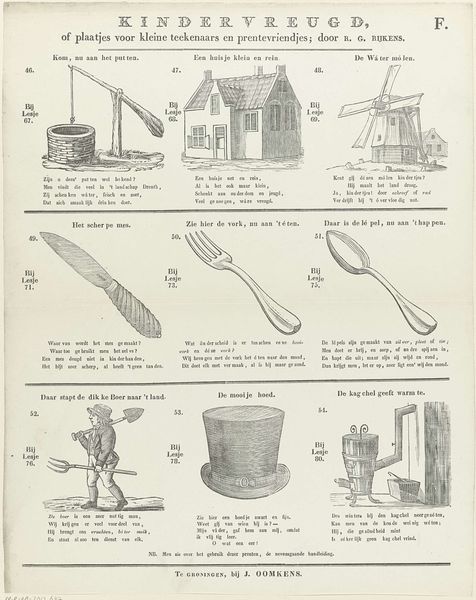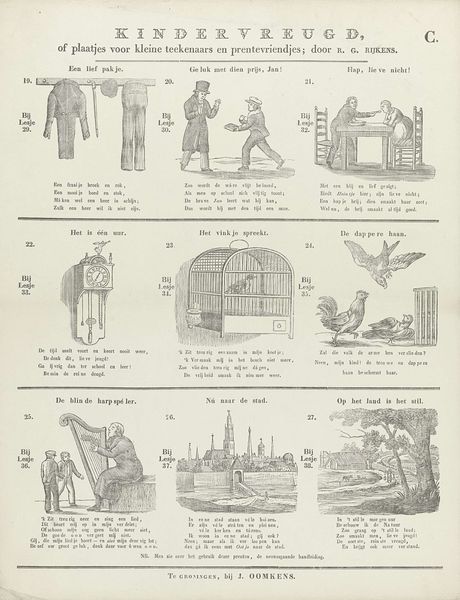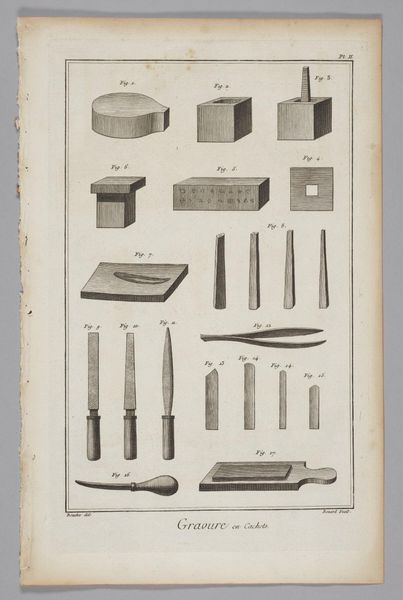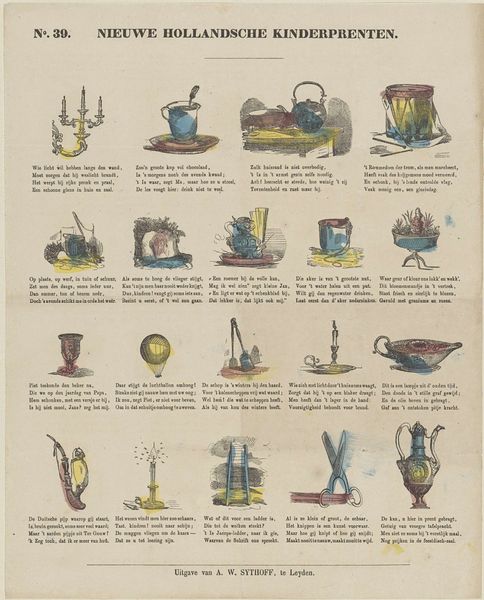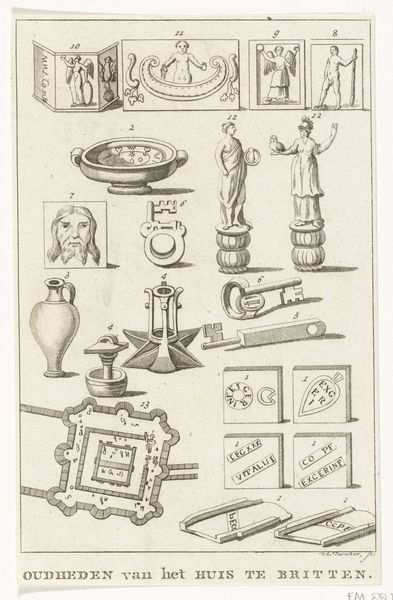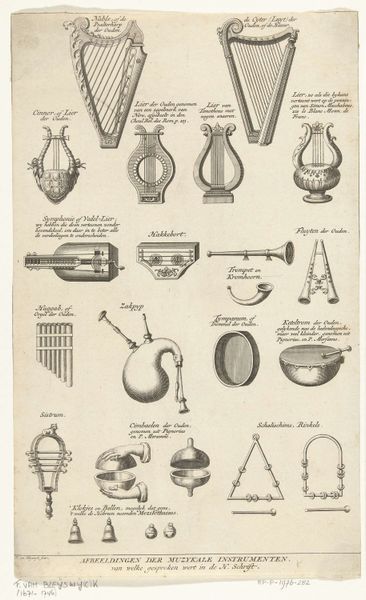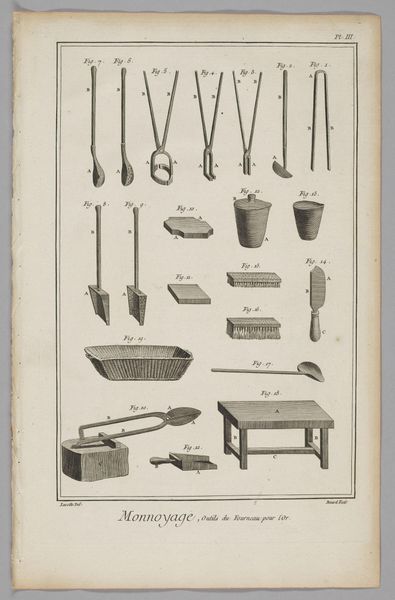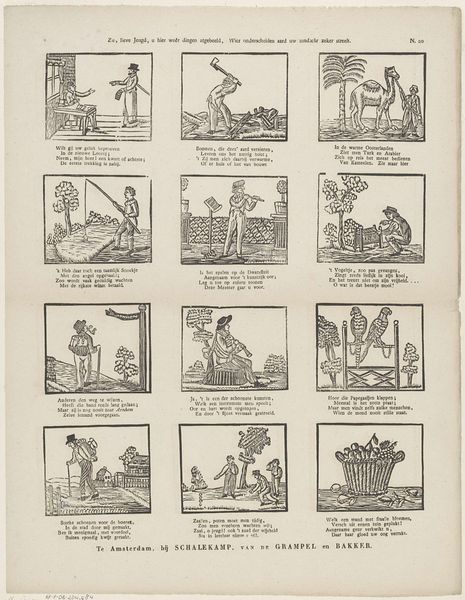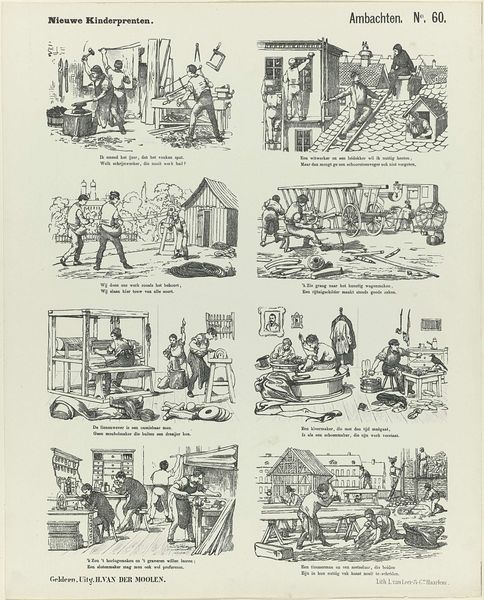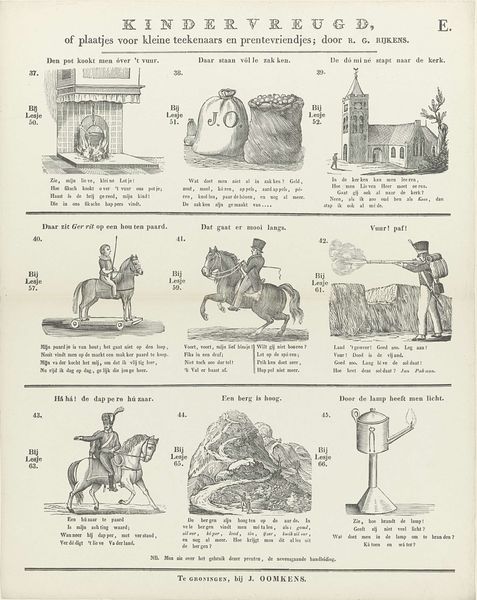
Kindervreugd / of plaatjes voor kleine teekenaars en prentevriendjes; door R. G. Rijkens 1808 - 1844
0:00
0:00
janoomkens
Rijksmuseum
graphic-art, print, paper, engraving
#
graphic-art
#
narrative-art
#
dutch-golden-age
# print
#
figuration
#
paper
#
line
#
genre-painting
#
engraving
Dimensions: height 398 mm, width 314 mm
Copyright: Rijks Museum: Open Domain
Curator: This broadside print, titled "Kindervreugd" or "Children's Delight," is by R. G. Rijkens and was printed by Jan Oomkens between 1808 and 1844. I am intrigued by the fact it’s a print meant for children that depicts objects of everyday life like a pocket watch, an inkwell, and a ladder, almost like a visual catalogue. It’s simple and charming but makes me wonder, what purpose did these images serve beyond simple amusement? Editor: It's true; there's a childlike quality to it that immediately makes you smile. I wonder how such images functioned in children’s lives two centuries ago. How would a materialist lens analyze this work? Curator: Well, let's think about the context of production and consumption. This wasn’t some precious painting, right? It's a mass-produced print. Engravings like this were relatively affordable. So, who was buying them and for what purpose? It gives us insights into the growing culture of childhood literacy and domestic education, and the rising middles class in the Netherlands. Editor: So the availability of prints signifies a shift in how children were perceived and educated? Curator: Precisely. Before widespread printing, access to images and texts were very limited. The use of common materials—paper, ink—transformed into a social tool, designed to educate and shape young minds. Editor: It’s fascinating how analyzing the materiality and context unlocks layers of meaning about education and societal values. Curator: Yes, and that's just the beginning. Consider the labor involved – the engraver, the printer – each playing a role in bringing these ideas to a broader audience. By considering it, it becomes a fascinating artifact reflecting both artistic practice and societal structures. Editor: Thanks. Thinking about the economic process really shifts how one views the piece. Curator: Agreed!
Comments
No comments
Be the first to comment and join the conversation on the ultimate creative platform.
